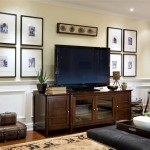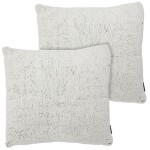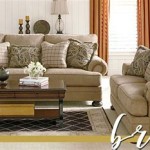Europe Home Decor Market Size: Trends, Drivers, and Opportunities
The Europe home decor market represents a significant sector within the broader consumer goods industry. It encompasses a wide array of products designed to enhance the aesthetic appeal and functionality of residential spaces. These products include furniture, textiles, lighting, wall decor, flooring, and decorative accessories. The market's size is influenced by various factors, including economic conditions, housing market trends, consumer preferences, and the adoption of new technologies and design styles.
Understanding the dynamics of the Europe home decor market requires careful consideration of its diverse regional variations. Western European countries, such as Germany, the United Kingdom, and France, typically exhibit higher levels of consumer spending and a greater demand for premium and luxury home decor products. In contrast, Eastern European countries often present opportunities for growth in the mass market segment, driven by increasing disposable incomes and a rising interest in home improvement. Furthermore, the market is characterized by a mix of established international players and smaller, regional brands, each catering to specific consumer segments and design preferences.
This article provides an overview of the current state of the Europe home decor market, examines the key drivers and trends shaping its growth, and explores the opportunities and challenges facing businesses operating in this dynamic sector. Data from reputable market research firms and industry reports will be utilized to provide a comprehensive and evidence-based analysis. The focus remains on providing objective information and insights to assist stakeholders in making informed decisions.
Economic Factors Influencing Market Size
The overall economic health of European countries exerts a considerable influence on the home decor market. Periods of economic expansion typically correlate with increased consumer confidence and spending, leading to a greater demand for home furnishings and decorative items. Conversely, economic downturns can result in reduced consumer spending and a decline in market growth.
Inflation rates also play a crucial role. High inflation can erode purchasing power, making consumers more price-sensitive and potentially leading to a shift towards lower-priced alternatives or delaying purchases of non-essential home decor items. Similarly, interest rates impact the housing market, influencing the number of new homes being built and renovated, which in turn affects the demand for home decor products.
Government policies and regulations can also have indirect effects. For example, tax incentives for home improvements or energy-efficient upgrades can stimulate demand for related products, including certain types of flooring, lighting, and insulation materials. Trade agreements and tariffs can impact the cost of imported home decor products, affecting both manufacturers and consumers.
Furthermore, the aging population in many European countries is impacting the market. Older homeowners may be more likely to invest in home modifications to improve accessibility and safety, driving demand for specific types of home decor and renovation products. Understanding these economic factors is crucial for forecasting market trends and identifying opportunities for growth.
Trends in Consumer Preferences and Design
Consumer preferences and design trends are continuously evolving, shaping the demand for different types of home decor products. In recent years, there has been a growing emphasis on sustainability and eco-friendliness. Consumers are increasingly seeking out products made from recycled materials, sustainably sourced wood, and non-toxic finishes. This trend is driven by a growing awareness of environmental issues and a desire to make more responsible purchasing decisions.
The rise of minimalist design principles has also influenced the market. Many consumers are opting for simpler, more functional home decor items with clean lines and neutral colors. This trend reflects a desire for clutter-free living and a focus on creating calm and relaxing spaces. The popularity of Scandinavian and Japanese-inspired design styles, which emphasize minimalism and natural materials, is a testament to this trend.
Technology is also playing a significant role in shaping consumer preferences. Smart home devices, such as smart lighting systems and automated window coverings, are becoming increasingly popular, enhancing both convenience and energy efficiency. Moreover, online shopping and social media platforms have made it easier for consumers to discover new design trends and find inspiration for their home decor projects.
Personalization is another key trend. Consumers are increasingly seeking out unique and customizable home decor items that reflect their individual tastes and personalities. This has led to a growth in demand for handmade crafts, vintage furniture, and personalized art prints. The ability to create a home that is both stylish and personal is a major driver of consumer spending in the home decor market.
Technological Advancements and E-commerce Growth
Technological advancements are transforming the way home decor products are designed, manufactured, and sold. 3D printing technology is enabling the creation of customized and intricate designs, allowing manufacturers to offer more personalized products. Augmented reality (AR) and virtual reality (VR) technologies are being used to enhance the online shopping experience, allowing consumers to visualize how different home decor items will look in their homes before making a purchase.
E-commerce has become an increasingly important channel for the sale of home decor products. Online retailers offer a wider selection of products at competitive prices, making it easier for consumers to shop from the comfort of their own homes. The COVID-19 pandemic accelerated the growth of e-commerce, as many consumers turned to online shopping due to lockdowns and social distancing measures. Even as brick-and-mortar stores reopen, e-commerce is expected to remain a significant force in the home decor market.
The use of data analytics is also helping businesses to better understand consumer preferences and optimize their marketing strategies. By analyzing online browsing behavior and purchase data, companies can identify emerging trends and target their advertising campaigns more effectively. This allows them to reach the right customers with the right products at the right time, maximizing their sales and profitability.
Furthermore, the development of new materials and manufacturing processes is leading to the creation of more durable, sustainable, and aesthetically pleasing home decor products. Innovations in textiles, coatings, and finishes are enhancing the performance and longevity of furniture, flooring, and other decorative items. These technological advancements are driving innovation and growth throughout the entire home decor market.
The increasing adoption of smart home technologies also significantly impact the market. Companies are developing integrated systems that control lighting, temperature, security, and entertainment, offering consumers a convenient and connected living experience. This trend is creating new opportunities for businesses to offer innovative and high-value home decor products that integrate seamlessly with smart home ecosystems. The convergence of technology and design is expected to continue shaping the future of the Europe home decor market.
Supply chain management is also being revolutionized by technology. Companies are using advanced software and tracking systems to optimize their logistics operations, reduce costs, and improve efficiency. This is particularly important for the home decor market, where products are often bulky and require specialized handling. Efficient supply chain management is essential for ensuring that products are delivered to customers on time and in good condition.
The combination of these factors – economic influences, shifting consumer preferences, and rapid technological advancements – creates a complex and dynamic landscape for the Europe home decor market. Businesses that can adapt to these changes and embrace innovation will be best positioned to succeed in this competitive environment. Understanding these key aspects is essential for strategic planning and effective market penetration.

Wall Decor Market In Europe 2025 Growing Housing And Consumer Expenditure On Home Improvement Eu To Boost Growth Technavio Business Wire

Europe Furniture Market Report 2025 2027

Europe Furniture Market Report 2025 2027
Home Furnishings Market In Europe To Grow At A Cagr Of 6 46 From 2025 2027 Growth The Real Estate And Construction Industry Drive Technavio

Home Décor Market To Record A Cagr Of 9 Technavio Identifies Europe As Key

Sustainable Home Decor Market Size Growth To 2025 2028

Home Decor Market Size Share Trends Report 2025

Home Decor Market Global Industry Ysis And Forecast 2025 2029

Contract Furniture And Furnishing Market In Europe To Grow By 2 64 Billion During 2025 Increasing Number Of Office Spaces Be Key Trend Technavio Business Wire

Global Home Decor Market 2025 Enhancement Of Consumer Experience Through Technologies To Boost Growth Technavio Business Wire







